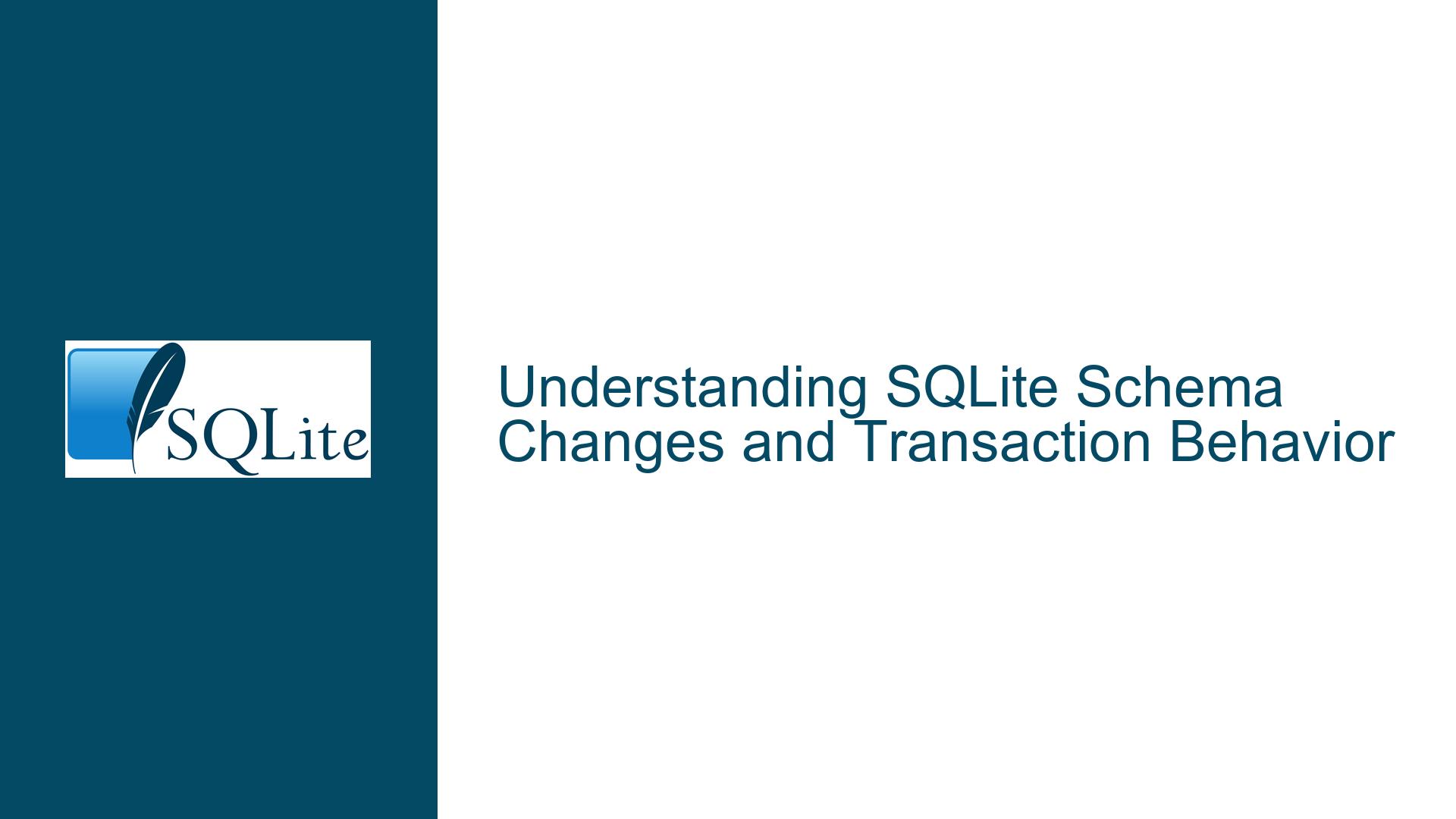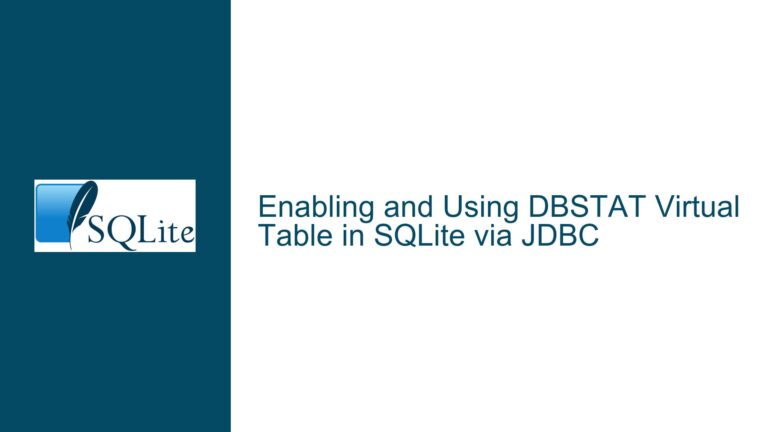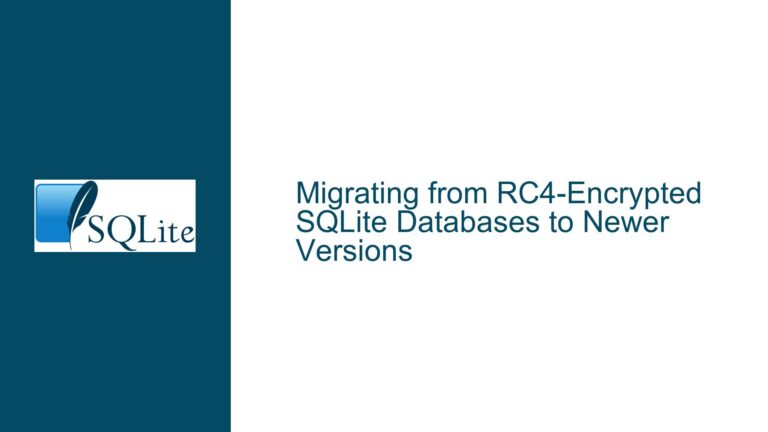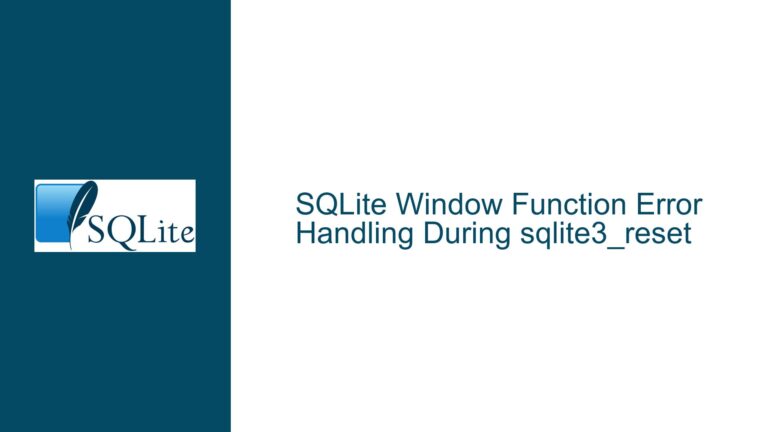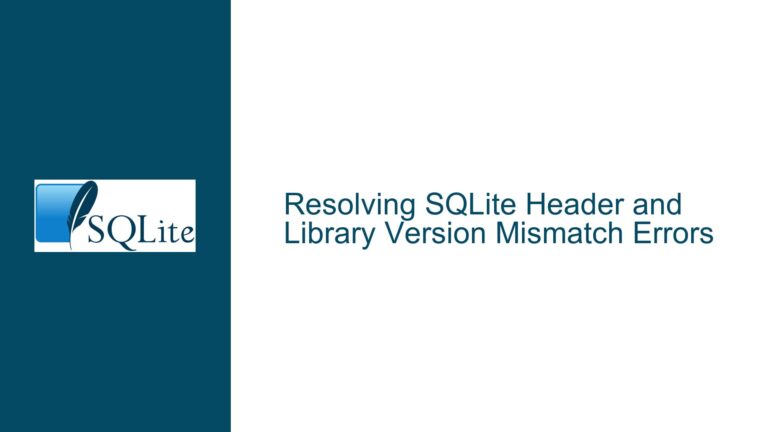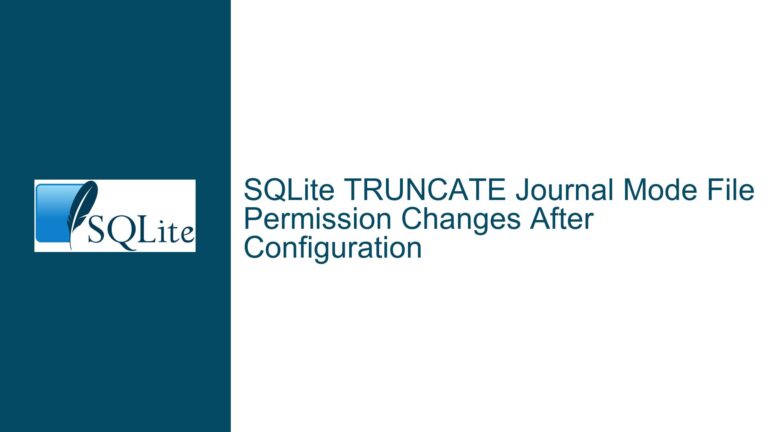SQLite Schema Changes and Transaction Behavior
Schema-Changing Commands and Their Implicit Transaction Requirements
SQLite’s transactional guarantees extend to schema modifications such as ALTER TABLE, CREATE INDEX, and certain PRAGMA statements. These operations are not exempt from ACID (Atomicity, Consistency, Isolation, Durability) principles but exhibit unique locking behaviors that differ from standard data manipulation language (DML) operations like INSERT or UPDATE. The confusion arises when developers assume schema changes bypass transaction boundaries or behave identically across database systems.
Every SQL command that modifies database state—including schema changes—triggers an implicit transaction in SQLite if no explicit transaction is active. This includes ALTER TABLE operations that rewrite tables, CREATE INDEX statements that build auxiliary data structures, and write-mode PRAGMA directives like PRAGMA journal_mode=WAL. However, certain read-only PRAGMA commands (e.g., PRAGMA table_info) do not initiate transactions. Schema changes require exclusive locks on the database file, which can lead to contention when multiple connections attempt concurrent modifications.
The root of ambiguity lies in the granularity of documentation. While SQLite’s transactional overview states that "all changes" are ACID-compliant and the language reference notes that "any SQL command" accessing the database starts a transaction, schema-altering commands are not explicitly called out. Developers familiar with other RDBMSs like PostgreSQL or MySQL—where schema changes often operate under different locking regimes—may misinterpret SQLite’s behavior. For instance, MySQL uses metadata locking to prevent concurrent DDL and DML operations, while SQLite serializes schema modifications through its file locking mechanism.
Misinterpretation of Transaction Scope in Schema Operations
A common misconception is that schema changes are "transaction-less" or that they automatically commit pending transactions. In reality, SQLite wraps schema modifications within the current transaction context. If a developer executes ALTER TABLE without an explicit BEGIN, SQLite creates a transient transaction that commits immediately after the command completes. However, if the ALTER TABLE is part of an explicit transaction block (BEGIN ... COMMIT), it remains atomic and reversible until the final COMMIT.
This behavior becomes problematic when developers assume that schema changes can interleave freely with DML operations across multiple connections. For example, Connection A might start a transaction to insert data into a table while Connection B attempts to add a column to the same table. SQLite will force Connection B to wait until Connection A’s transaction completes, potentially leading to "database locked" errors if timeouts are not configured properly.
Another layer of complexity stems from PRAGMA commands. While most PRAGMA statements are read-only (e.g., PRAGMA foreign_keys), others modify database state (e.g., PRAGMA schema_version). The latter group initiates transactions, but the documentation does not clearly distinguish between these categories. Developers might erroneously assume that all PRAGMA commands are non-transactional, leading to unexpected behavior when such commands interfere with explicit transaction blocks.
Cross-database comparisons exacerbate confusion. In Microsoft SQL Server, schema modifications can be executed under snapshot isolation, allowing concurrent reads. Oracle uses DDL statements that implicitly commit active transactions—a stark contrast to SQLite’s behavior. Without explicit documentation clarifying these differences, developers porting applications between databases may introduce subtle bugs related to schema migration timing and locking.
Resolving Lock Contention and Documenting Implicit Behaviors
To mitigate locking issues during schema changes, developers should adopt the following strategies:
Exclusive Transaction Blocks: Encase schema modifications in explicit
BEGIN EXCLUSIVEtransactions. This elevates the lock level immediately, preventing other connections from acquiring read or write locks until the schema change completes. For example:BEGIN EXCLUSIVE; ALTER TABLE users ADD COLUMN last_login TIMESTAMP; COMMIT;This approach reduces contention by signaling intent early, though it may increase latency for concurrent readers.
Retry Loops with Backoff: When encountering
SQLITE_BUSYerrors, implement retry mechanisms with exponential backoff. Usesqlite3_busy_timeout()to set a maximum wait period, but note that this applies only to read and reserved locks—schema changes requiring exclusive locks may still fail if other connections hold active transactions.Write-Ahead Logging (WAL) Mode: Enable WAL mode (
PRAGMA journal_mode=WAL) to allow concurrent reads during schema modifications. However, note that WAL does not eliminate the need for exclusive locks duringALTER TABLEoperations. It merely decouples readers from writers in standard DML scenarios.Explicit Documentation Cross-Referencing: Augment SQLite’s documentation with concrete examples. For instance, the Transactional page could include:
"Schema-altering commands such as
ALTER TABLEandCREATE INDEXare fully transactional. If executed outside an explicit transaction, SQLite will create an implicit transaction lasting exactly the duration of the command. These commands require exclusive database access and may block or be blocked by concurrent readers or writers."Similarly, the Transaction Language page should clarify:
"Write-oriented
PRAGMAdirectives (e.g.,PRAGMA user_version) participate in transaction boundaries identically to DML statements. Read-orientedPRAGMAcommands do not initiate transactions."Schema Lock Monitoring: Use
sqlite3_db_status(db, SQLITE_DBSTATUS_LOOKASIDE_USED, ...)to monitor lock states programmatically. While SQLite does not expose granular lock telemetry, observingSQLITE_BUSYorSQLITE_LOCKEDreturn codes can help diagnose contention points.Delayed Schema Migrations: Defer non-critical schema changes to low-activity periods. For applications requiring zero-downtime migrations, consider using temporary tables or shadow schemas. For example:
-- Create new table with desired schema CREATE TABLE users_new (...); -- Copy data from old table INSERT INTO users_new SELECT ... FROM users; -- Atomically swap tables within a transaction BEGIN EXCLUSIVE; ALTER TABLE users RENAME TO users_old; ALTER TABLE users_new RENAME TO users; COMMIT;This minimizes exclusive lock duration by performing heavy data operations outside the critical rename step.
By internalizing SQLite’s transactional model for schema operations and proactively addressing locking edge cases, developers can avoid common pitfalls. Documentation enhancements that explicitly enumerate the transactional nature of DDL commands will bridge the comprehension gap for those accustomed to different RDBMS behaviors.
